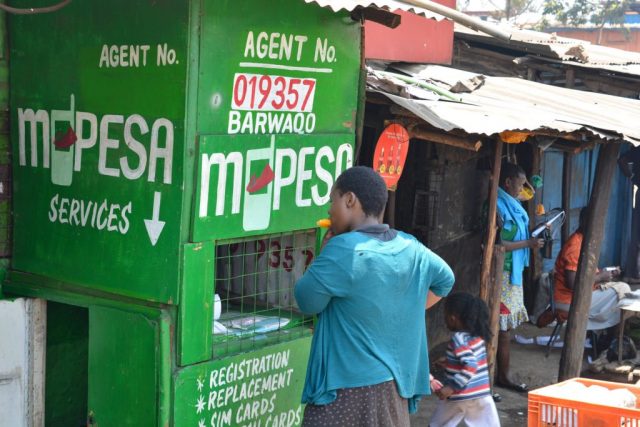In a couple of recent posts, I briefly traced the history of financial inclusion and its links to the emergence and diffusion of digital technologies.
A recently published book by Nick Bernards tackles the same issue more comprehensively while taking a more critical perspective. His departing point, however, is not financial inclusion but rather poverty finance. This concept highlights the tight interconnections between the Global South and the Global North, where idle finance capital finds new investment opportunities in those who so far have been excluded from such markets. It does resemble, to a point, the standard definition of financial exclusion but overcomes its much-touted “democratization” claims while framing it within a historical context. There is more than meets the eye here. 
Such a framing allows the author to trace the origins of poverty finance back to colonialism and its immense extractive capacity. Generally, banks in the colonies operated in large urban centers and supported public sector investments and colonial enterprises, if available. But they did not offer banking services to the local populations or create any local branches. However, the degree of integration of the colonial territories into the world market caused differentiation among them. First, banking systems developed more deeply in regions where mines, large-scale plantations and white settlers dominated. And second, debt (or lack of access to credit systems) was used to control the local working population. Although Bernards does not mention this, similar patterns can also be found in many Latin American countries, despite their alleged independence from the colonial powers at the time.
Efforts to increase finance access to local populations started in the 1930s with a focus on agriculture and the peasantry comprising mostly smallholders. Different credit schemes were put in motion. As a result, the banking sector did expand marginally, backed big time by colonial states. In Nigeria, for example, by the 1950s, there was one bank branch for every two million people. Nothing to be very proud of, really. In any case, many colonial territories ended up with a large public debt.
By the 1960s, the approach to reducing financial exclusion underwent a critical shift. Instead of relying on public entities or cooperatives, a market-based approach started to creep in. Spearheaded by the World Bank and USAID, agriculture and housing became core targets, and those providing financial services to the two sectors started privatizing and commercializing services. Note that such an evolution predates the Washington Consensus and its now infamous structural adjustment programs by at least a decade. It also laid the ground for the emergence of micro-loans and micro-credit led by Yunus’s Grameen Bank.
Another essential contribution of Bernards’s new book is the introduction of microinsurance into the picture. Here we find a direct connection between poverty finance and social protection. In the 1980s, the International Labor Organization (ILO) started to explore ways to provide social protection to rural populations in poor countries where fiscal capacity and austerity policies imposed by IFIs posed almost insurmountable challenges. In that context, ILO’s initial efforts suggested creating small-scale solutions financially supported and managed by local communities, thus sitting in between state and market-based alternatives. By the 1990s, however, it became clear that microinsurance schemes needed external capital. At that point, private players started to lead in this area.
The chapters on innovation also shed some new light on the topic. Indeed, the relative success of Kenya’s M-Pesa was a stepping stone for the emergence after 2015 of a new global fintech “consensus.” The Sochi Accord on Fintech for Financial Inclusion, the G-20 High-Level Principles for Digital Financial Inclusion, and the Bali Fintech Agenda promoted by the World Bank and the IMF are all required reading here. Not sure such a consensus is what developing countries are calling for. In any event, the real issue is whether fintech is dramatically different or more effective than previous solutions targeting poverty finance. The answer is negative.
Despite its critical contributions, it seems the book falls short in four areas. The first is social protection. Recent research has pointed out how conditional cash transfers and similar anti-poverty schemes have already been financialized. Brazil is a great example here. While poverty finance has been reduced via policies set by supposedly left-wing governments, this has been achieved thanks in part to the collateralization of social entitlements with little public investment in the provision of public goods and services.
Second, and as mentioned before, the history of poverty finance is not limited to countries that were colonies until the late 1950s. Indeed, financial exclusion was and still is enormous in countries that gained independence way before that, thus exposing new complex synergies between the Global South and the Global North, where elites from the former played a vital role in the particular development path chosen by many of those countries.
Third, while mentioning public banks in passing, Bernards does not address their history or recent reemergence as development banks providing alternatives to commercial and private financial institutions. Such institutions might be best positioned to address poverty finance systematically.
Finally, Cryptocurrencies and friends are missing in action. That is surprising, given their claims that they are indeed the decentralized solution to financial inclusion. Not that this reflects any actual reality. But given current valuations (despite recent sharp declines) and almost unlimited access to finance capital, they can quickly reproduce neocolonial links in developing countries, especially in areas more tightly connected to the world economy. Tourism-centered regions come immediately to mind here.
Raúl





